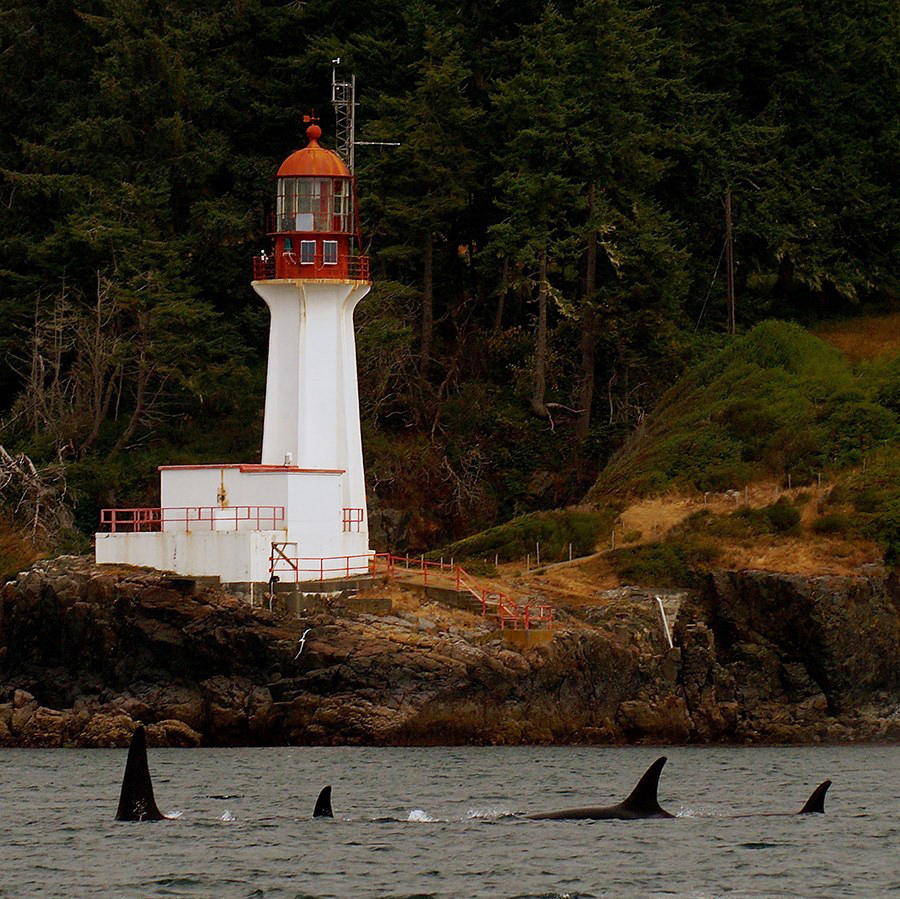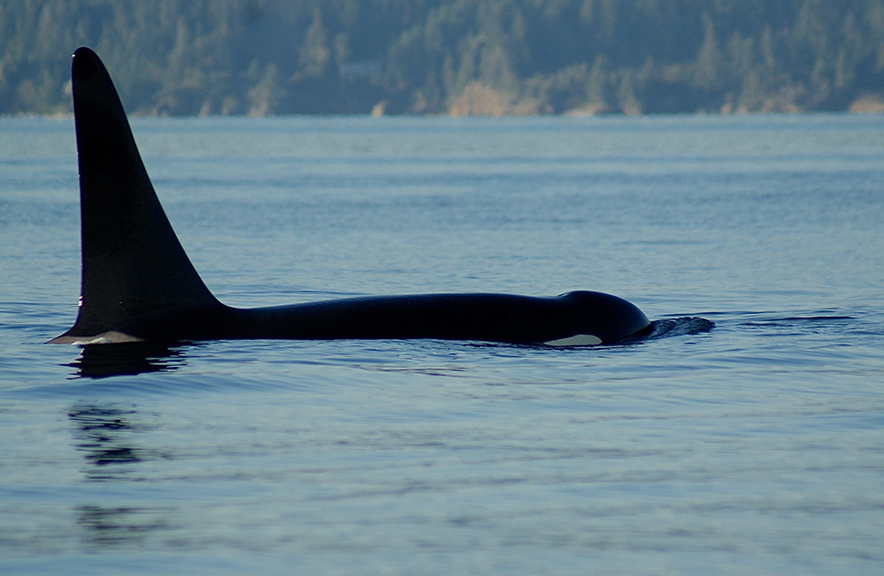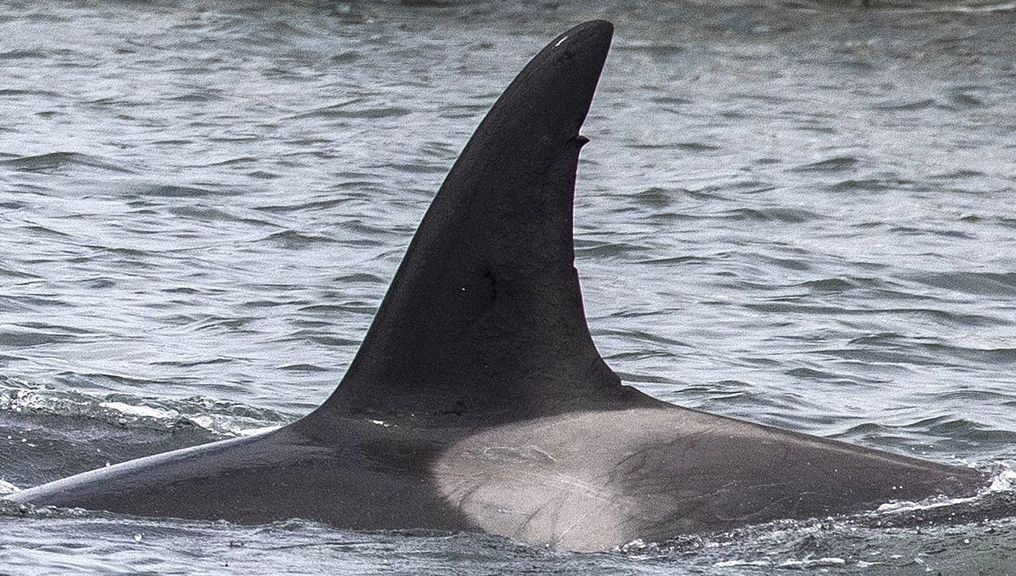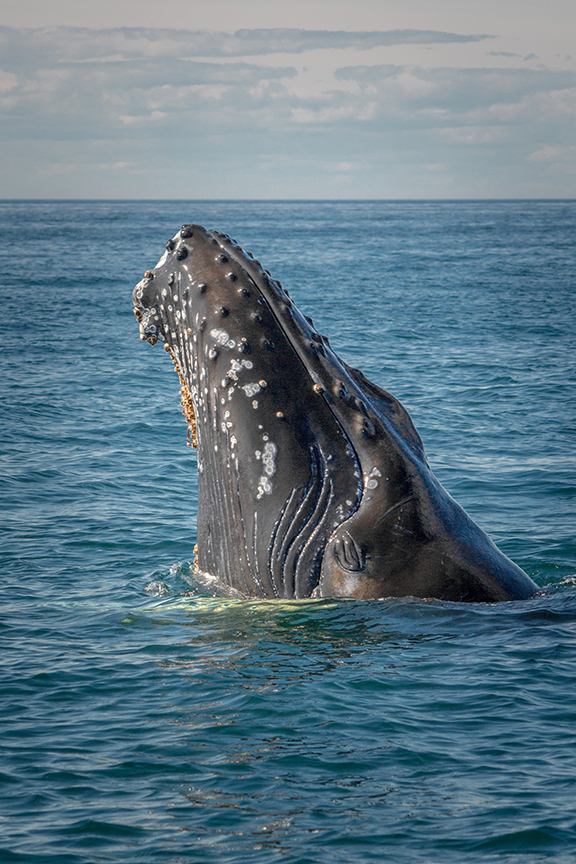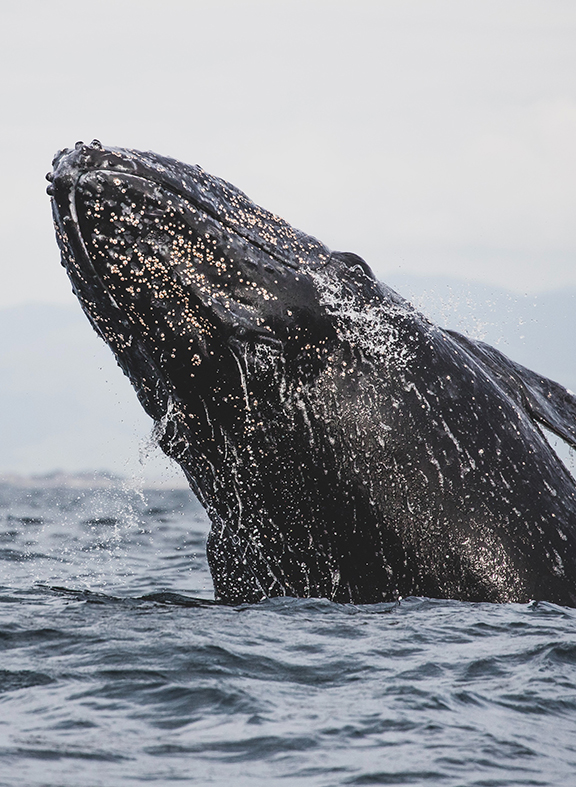HELPING TO PROTECT THE WHALES
One of the important conservation projects that has been in operation for years at the Sheringham Point Lighthouse is WHALE MONITORING. Coordinated by the Department of Fisheries and Oceans, as part of its comprehensive whale protection and species conservation programs, hydrophones (large, underwater microphones) have been placed in the Strait to monitor and listen to the killer whale pods (primarily), as well as humpbacks, that regularly pass by the Lighthouse site.
The data collected by the hydrophones is transmitted to DFO’s marine mammal program. It provides information on the movements of the whales, as well as identifying which pods are travelling and interacting with each other. This helps DFO’s scientists to better understand the whales’ population dynamics and, in turn, to better manage their conservation and protection.
The Society is dedicated to continuing this important conversation project, helping to expand our knowledge of the lives and and habits of these endangered local whale populations, by providing facilities and support for the monitoring to take place.
Viewing the Whales
WHAT ARE YOU SEEING (AND HEARING)?
Sheringham Point is a great spot for viewing whales. Whether they are in close to the shore, or whether they are just a puff of a spout in the far distance, the presence of whales is always a highlight of a visit to the Lighthouse site. While they can be seen all year, whales are most common in this area from May to October. So what are you seeing? There are three species of whales that regularly pass by the Lighthouse…
Orcas (Killer Whales)
There are two distinct populations of Orcas (Orcinus orca) that can be seen from Sheringham Point — the Southern Resident Killer Whales (SRKW), and the Bigg’s (Transient) Killer Whales.
THE SOUTHERN RESIDENT population is in serious danger. As of 2022, there were only 73 Southern Resident Orcas remaining. The Southern Residents are actually one large, extended family divided into three pods, known as J pod (with 24 individuals) , K pod (with 33 individuals) and L pod (with 16 individuals). The Southern Residents are fish eaters, with about 80% of their diet being Chinook Salmon — on average, that’s about 18 to 25 adult salmon per day required to meet the dietary needs of each whale. (The decline in salmon populations is one of the primary threats to the continued existence of the SRKW). The Southern Residents have a rich vocabulary, with a great variety of calls, whistles, clicks and other sounds that they use to communicate with each other over significant distances.
THE BIGG’S (TRANSIENT) population is somewhat healthier, with an estimated 350 individuals. Their family (pod) structure is a lot more fluid than the Residents, and they tend to travel in small groups, usually less than half a dozen individuals. Transients appear to travel farther than Residents, and individuals have been tracked between Southern Alaska and Norther California. Their diet is primarily marine mammals — seals, sea lions, porpoises and sometimes even other whales. The vocalizations of Transients are considerably more limited, especially when hunting.
ORCAS can live up to about 60 years. Females grow to about 6-7 metres on average, and weigh 3,500-5,000 kg , with males being a bit larger, 7- 8 metres on average, weighing over 5500 kg. Calves are about 2-3 metres long at birth, weighing about 180 kg. Orcas can swim at speeds of up to 50 km/hr for short periods.
INDIVIDUAL ORCA IDENTIFICATION is done by examining the shapes of the dorsal fin and saddle patch (the white area at the base of the dorsal fin) along with nicks and scratches in this area. These differences, although subtle, are unique to each whale (similar to a human fingerprint), and allow researchers to identify each individual whale.
This identification system was developed during the 1960s-70s by Dr. Michael Bigg (for whom Bigg’s Killer Whales are named), who was a marine mammal researcher at the Pacific Biological Station in Nanaimo. Bigg took thousands of standardized photos of all the whales in the region (Southern Residents, Northern Residents as well as Transients), and was able to use these photos to build an identification database. He also used this technique to group the whales into pods and matrilines, determining which wales were related to each other. As a scientist, Bigg didn’t name the whales, but assigned each pod and each individual in the pod a letter and number (e.g. J8 or L53) – assigned sequentially in the order in which they were identified.
Using this database, Bigg and other researchers from UBC and elsewhere were also able to record the vocalizations of each pod of whales, and determined that each pod has a distinct vocalization pattern (dialect), slightly different from the others. The closer the pods were related, the more similar the dialects were. In this way, researchers are able to tell from the vocalizations which whales are present in the area.
Humpback Whales
Humpback Whales (Megaptera novaeangliae) are large baleen whales, typically from 12 to 16 metres in length, and weighing about 36 tonnes. Despite their large size, Humpbacks are filter feeders, using the baleen in their mouths to filter krill (small, shrimp-like crustaceans), small fish and plankton from the water. Typically they would eat about 1000 – 1200 kg per day. Humpbacks are distinctive in having long, narrow pectoral fins (flippers) that help with their movements and breaching – they are, by far, the most acrobatic of the large whales. Most humpbacks are migratory. They spend their winters off Mexico or Hawaii, where they calf and breed, and their summers off BC and Alaska where food is more abundant. They are most abundant in this area during their spring and fall migrations, as they are passing through.
The most vocal of all whales, humpbacks are well-known for making a great variety of sounds which they string together to form “songs” lasting 5–35 minutes. The songs vary among groups of whales in different regions and undergo gradual but distinctive changes from year to year. Mostly vocal during mating, humpbacks are quieter during migration, but still vocalize to stay in contact with each other over significant distances.
Grey Whales (Gray Whales)
Grey Whales (Eschschrictius robustus) are another large baleen whale, usually 11-14 metres in length and weighing about 27-35 tonnes. Their lifespan is about 50-60 years. Like other baleen whales, their diet is made up mostly of krill and other small crustaceans, amphipods, isopods and small fish (about 1000-1300 kg per day). Grey Whales, however, are the only whales that are primarily bottom feeders, scraping the sides of their heads against the mud sea floor and filtering the sediment they dislodge through their baleen. Each spring and each fall about 20,000 Grey Whales pass by Vancouver Island (most offshore, but increasing numbers through the inside passage) on their migration between the Bering Sea summer feeding grounds and their winter breeding grounds off California and Baja Mexico. Calves are typically about 4.5 metres and weight about 600 kg. Grey whales do vocalize amongst themselves, but with a much more limited repertoire of grunts and clicks.
Is that spout a Humpback or a Grey Whale?
When you see a spout in the distance, it’s often difficult to tell what it is. Here are a couple of identification tips:
Grey whales tend to travel in small groups of 2 or 3 individuals. If it’s a larger group, it’s likely Humpbacks.
If the whales are close enough to see the back (as it surfaces), Humpbacks have a small dorsal fin toward the rear. Grey whales do not.
The spout of a Humpback tends to be tall and columnar, while that of a Grey Whale tends to be more bushy and rounder. This, of course, is on a calm day.
Listen to the Whales
We have recently installed a speaker on the south side (water side) of the engine room, that is connected to the hydrophone. Give it a try next time you visit, and listen for any passing whales.
In the future, we hope to be able to connect the hydrophone directly to this web site, so you can listen to the whale sounds in real time. In the interim, here are some recordings of Humpback Whales, Resident Orcas and Transient (Bigg’s) Orcas passing by Sheringham Point over the past few months. (To play, click the white circle; to scroll, click the left or right arrows):
And have a look...
The benefits of always having a cell phone in your pocket…while busy painting at the top of the tower during the recent restoration, Shane Burkett heard a telltale blow. He grabbed his phone and got this video of a group of Bigg’s Killer Whales passing by within about 10 m of the shoreline, right below the tower.





